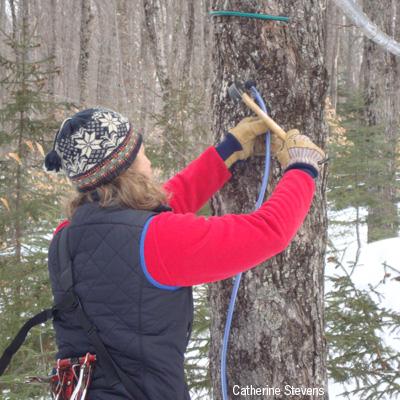Defining Modern, Sustainable Tapping Guidelines for Maple Syrup Production

Maple syrup production is a traditional practice in the Northern Forest that generates jobs, provides income, and maintains the traditional working landscape. Its long-term viability depends on the sustainability of annual sap extraction which must not damage more wood than can be replaced by annual tree growth or extract enough sugar resources to reduce growth rates and hinder replenishment of functional wood.To meet these requirements, maple producers follow traditional "tapping guidelines." Today, however, modern sap collection equipment and practices extract at least twice the volume of sap per tree than was possible with the technology used when the guidelines were developed, and evidence suggests even greater extraction rates are possible.
NSRC researchers have discovered that existing tapping guidelines remain a sustainable approach for collecting sap with "high-yield" practices. Researchers measured annual growth rates of trees subjected to high-yield collection methods at 18 Vermont maple operations and developed a model that estimates availability of functional wood in the tapping zone of a tree over time. They used the model to determine minimum growth rates required for tapping trees to be sustainable using current tapping guidelines.
Average growth rates observed for trees tapped with high-yield sap collection practices were well over the minimum rates required for tapping to be sustainable using traditional, conservative tapping guidelines. These results indicate that the guidelines currently in place in the maple industry are appropriate for use with high-yield collection practices. These recommendations apply only to healthy overstory maple trees 10 to 12 inches in diameter or greater and growing on good quality sites.
